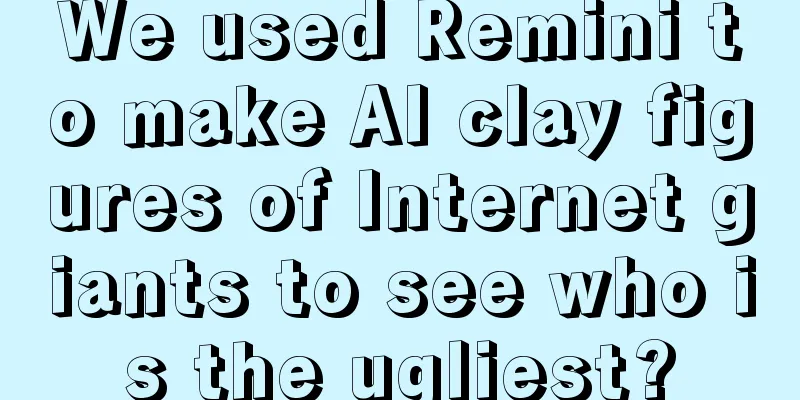4 tags to build high-quality user portraits

Can user portraits increase the payment rate? Of course they can, the question is: how? A few days ago, a student A encountered this question during an interview. Student A raised his hand: I know this question! Build an RFM model, divide users into 27 categories, and then give VIP status to important value customers (111), and actively maintain contact with important retained customers (011)... and recite the 27 categories skillfully. As a result, the interviewer hung up on me! 1. Talk about user tags, let’s talk about scenarios firstFirst of all, each analysis method is limited to specific business scenarios. In essence, the RFM method widely circulated on the Internet is only suitable for high-frequency interactive retail e-commerce business scenarios, such as durable goods, maternal and child care, medical care, health care, games, film and television entertainment, etc., which are not suitable for RFM. And this student ran into the gun: he was interviewing for a novel reading APP. The motivation for paying for novels is highly content-driven. If you want users to pay, you must at least have content that they enjoy. If you want users to enjoy, you must know what kind of content they like. This is a problem that user profiling needs to solve. Although both are content, novels are different from short videos or live broadcasts. Users’ sense of pleasure is not stimulated directly by the twisting and turning young ladies or the chattering “black chicken brother” on the screen, but is obtained in the immersive experience during the continuous reading process. This forms a gradual immersion conversion process: find content → click to read → continue reading → paid page → pay → continue paying. Therefore, locating the current stage of the user and guiding the user to the next stage is the second problem that user portraits need to solve. At this point, you can think further: what kind of user tags can be obtained from the novel reading app to build a user portrait. 2. Basic attribute tagsWhen it comes to user portraits, many students will say the same things: gender, age, occupation, income, hobbies... Just make an information collection form and you'll be done! There are indeed scenarios where forms can be used for collection. For example:
However, these forms are based on the rigid needs of the business itself. Without this information, the service cannot be carried out at all. Therefore, this kind of form information can be understood and cooperated by users, the difficulty of collection is relatively low, and it is easy to review. In the novel scenario, it is not appropriate to collect information using a form. Because there is no real need for a "hobby" of novels:
Not to mention other personal privacy information, does reading novels require a household registration check? Without the users' understanding, even if the data is forcibly collected, it is false. Therefore, when designing a form, you should be restrained and try to find key fields. In terms of reading, male and female are very different and easy for users to understand, so they can be collected in the form. And male and female is a simple option that conforms to MECE and is not likely to cause ambiguity. From another perspective, if what is collected is: reading interest. The options are: fantasy, history, time travel, romance, domineering president, and other. Users can easily cause ambiguity, such as what category does fantasy + time travel belong to? What category does a heroine belong to? When users are ambiguous, they will fill in the blanks randomly, and the collected data will be problematic. These details may seem trivial, but they actually determine the accuracy of the basic attribute labels. 3. Key Behavior TagsTo locate the current stage of the user, you need to find the most critical tags that can distinguish the user type. Since the goal is to increase the payment rate, the payment-related tags are the most important. According to the user's payment record, three states can be distinguished: never paid/paid for one novel/paid for 2 or more books. The guidance direction is also very clear (as shown below). Note that in the above classification, there is a strategy that guides: keep subscribing to this novel. This means that it is necessary to observe the user's progress when reading the novel. If the paid novel has been completed/discontinued, new content must be recommended in a timely manner; if the user simply cannot finish reading it or has already abandoned it, then good content must be recommended. Therefore, the user's reading behavior tags must be considered again. 4. Hierarchical Behavior TagsUser reading behavior is of great significance to payment. In theory, only users who have entered the pit will pay, and they are likely to pay for more other content they are interested in. Those who have not yet entered the pit should be dragged into the pit as soon as possible, and those who have already left the pit should be prevented from leaving. Therefore, it is important to distinguish between the states of not entering the pit, entering the pit, and leaving the pit. "Getting into the pit" is a common name for readers who are addicted to the plot of a novel. The definition of a label cannot be so casual. It must have specific indicators + calculation formulas + business meanings to be considered a label. If a user is hooked, the minimum requirement is to have a certain login duration and frequency in the novel APP. Therefore, you can use factors such as the number of logins/total login duration in the past week to distinguish between light, medium, and heavy user platform activity (as shown in the figure below). Thirdly, if a user is attracted to a piece of content, he will definitely not browse around, but focus on one piece of content. Then this content will account for a considerable proportion of his active time on the platform. This can distinguish whether the user focuses on a content label:
To determine how long is considered long, we also need to use the stratified analysis method. Third, falling into a pit and leaving a pit is a dynamic process. If there was no focused content before, but there is now, it is called falling into a pit; if there was focused content before, but there is no focus now, it is called leaving a pit. Therefore, when constructing labels, we cannot only consider the current state, but also have to associate it with the state of the previous cycle. For example, if we associate it with the previous cycle and find that the user's focus has decreased, then it can be summarized as falling into a pit. If the focus increases, it can be summarized as leaving a pit (as shown in the figure below). With behavioral labels, combined with payment, we can more accurately distinguish problems. Of course, when formulating strategies, we must also consider the user scale and give priority to meeting the needs of large groups (as shown in the figure below). Of course, in actual work, the data situation may not be so complicated. It is very likely that there is a clear distinction between paying and non-paying users. Those who pay will pay after reading a few pages, while those who don’t pay will never pay. It is very likely that the state transformation is completed in one go, and whether you are hooked or not will be immediately apparent after reading the first few pages. It is very likely that users are dedicated and focused, and they just pursue one thing, and only look for other things when they can no longer pursue it. All of these are possible and will make data analysis simpler. However, when constructing label logic, the MECE method must also be followed to avoid accidents. This is the essential difference between how professional data analysts and business people think about problems: business people can directly grasp the most obvious, while data people focus on the comprehensiveness and rigor of the situation. 5. Interest Preference TagsAs mentioned above, there are various problems with directly collecting interests. So what else can we do? Of course, we can extract interests from user behavior. If a user is attracted to a certain content, then he must be interested in it. The difficulty here is to distinguish: what point he is interested in. Because there are too many static tags related to a content: author, theme, style, comments, popularity, writing style... and many other parts that cannot be standardized. Therefore, from the beginning, we cannot expect the interest tags to be particularly accurate. Instead, we need to combine the characteristics of the novel category, select the same and cross-items, and find similar items. After all, novels are not short videos, and they do not need to be switched every 15 seconds. When interest preferences intersect with payment behaviors, there is another possibility: there is a type of user who insists on getting something for free, has many related reading behaviors, but just doesn't pay. At this time, you can use coupon testing to distinguish the price-sensitive ones from the real freeloaders, thus forming a price preference label. 6. Output StrategyWith the above basic label preparation, when finally outputting the strategy, you can combine various strategies according to user needs just like building blocks. As long as the foundation is laid firmly, the results will be easy to achieve (as shown in the figure below). VII. SummaryMany students are used to working with ready-made data sets on the Internet. Most of the so-called user portraits are ready-made fields, especially those directly collected from form fields. This kind of ready-made data set is very fun to practice with, but it is very different from the actual situation. In actual work, even if you can use forms to collect data, you still have to consider the problems of errors, fraud, and review during the collection process. Not to mention, quite a lot of data labels need to be obtained through analysis, calculation and testing, which requires layer-by-layer construction, from simple to complex. The techniques and means in these processing processes are the truly valuable skills and abilities, and we encourage each other. Author: Down-to-earth Teacher Chen, WeChat public account: Down-to-earth Teacher Chen |
<<: WeChat + DeepSeek, several scenarios I can think of
>>: The user portrait built with the SIKT model is so easy to use!
Recommend
The troubles encountered in e-commerce and how to deal with them
Introduction: E-commerce sales platforms continue ...
WeChat's first update in 2024, a brand new version
WeChat will have its first update in 2024. Let’s t...
Estimated future DAU
This article teaches you how to use DAU and APRU t...
TikTok: Outbreak, Chaos and Crisis
Douyin Dabo is not only an increase in sales, but ...
The GMV of a single game exceeded 100 million yuan, and the light luxury minimalist women's clothing exploded in the live broadcast room
We will explore the secrets of COCO ZONE's suc...
What products are suitable for Amazon FBM? What are the differences between it and FBA?
Now the e-commerce industry is developing very wel...
Games + learning, the secret behind Duolingo's 97.6 million monthly active users
This article deeply analyzes how Duolingo has attr...
Workers encounter overbearing leaders: obedient, taking the blame, and always available
The author interviewed five workers who had encoun...
Pay for knowledge, and end the relationship as soon as the deal is completed!
Do you know about knowledge payment? Do you know h...
Can eBay operators contact customers directly? What do operators need to do?
In the process of cross-border e-commerce, communi...
How is Amazon's UAE site? How is the market?
The characteristic of Amazon's UAE site is tha...
How to increase profits in Lazada? Method introduction
In the past few quarters, the number of orders on ...
How does funny blogger @丁郑美子 attract so many fans with dancing?
The comedy track has been constantly producing bat...
How many products can be listed on Lazada at most? How to list products on Lazada?
There are many cross-border e-commerce platforms a...
6 tips for new entrepreneurs to help you save 1 million
The main content of this article is to write six a...









